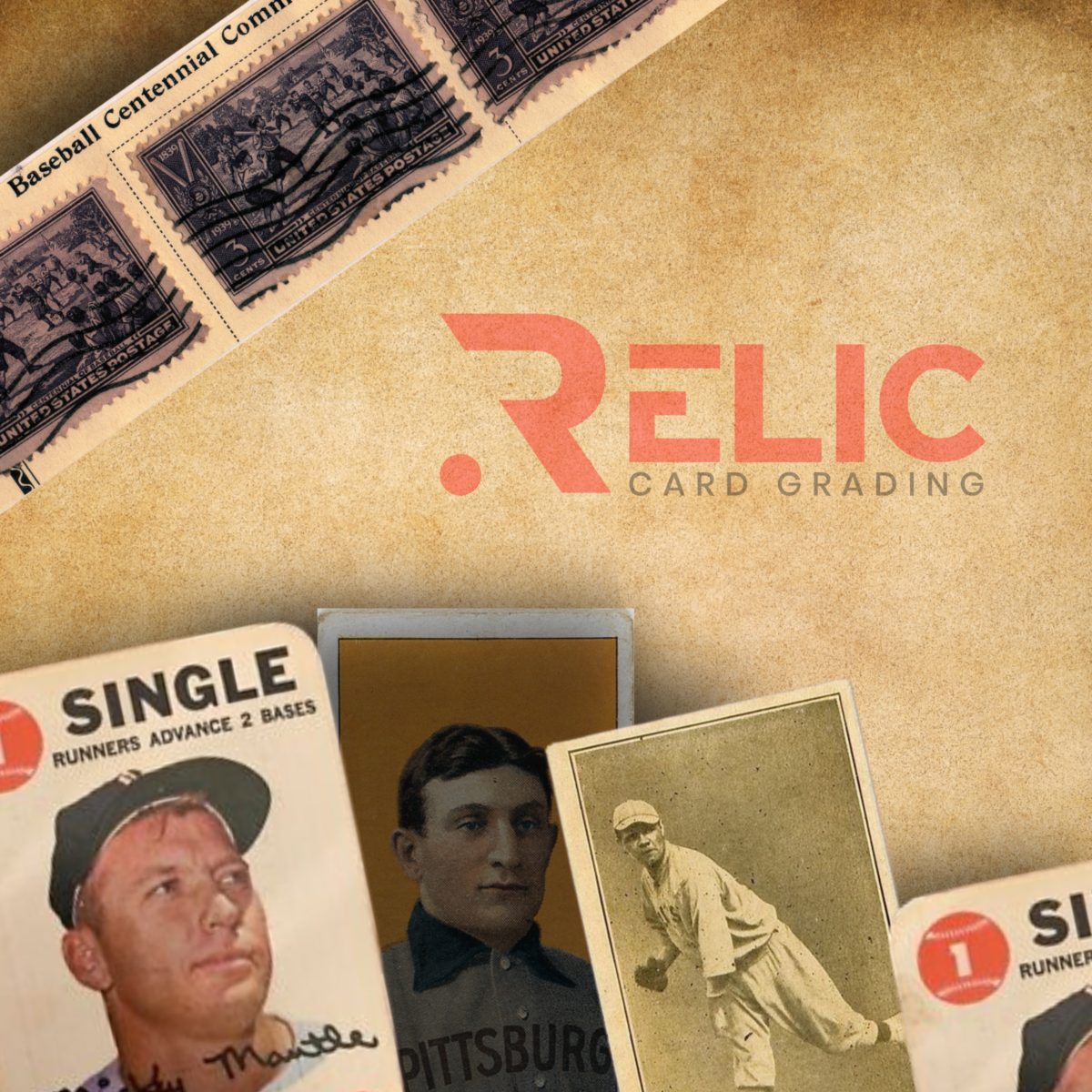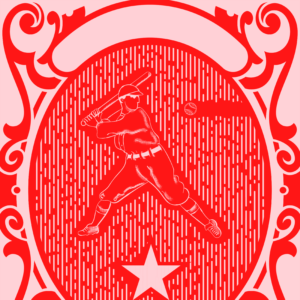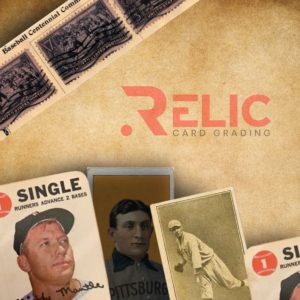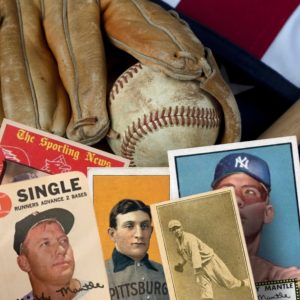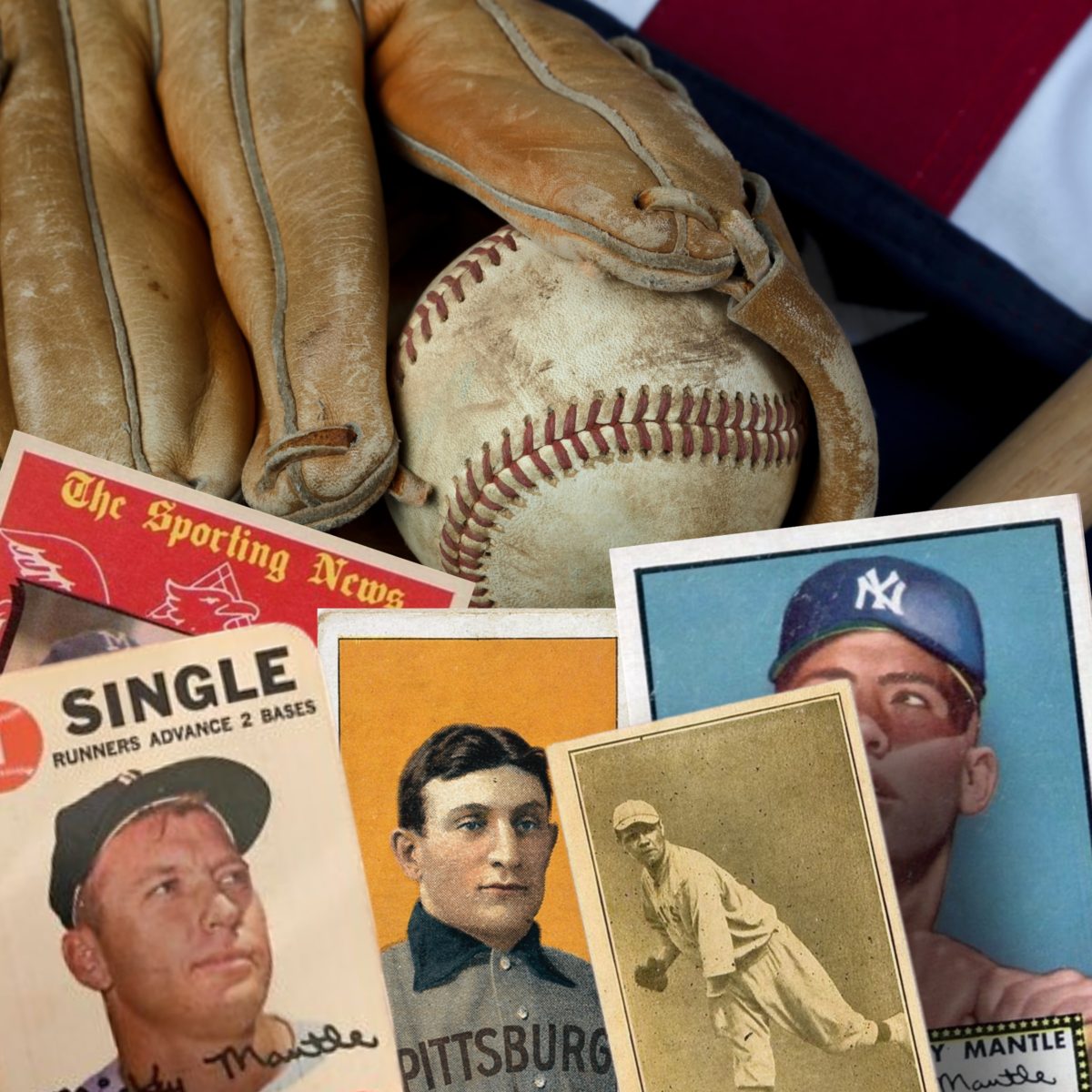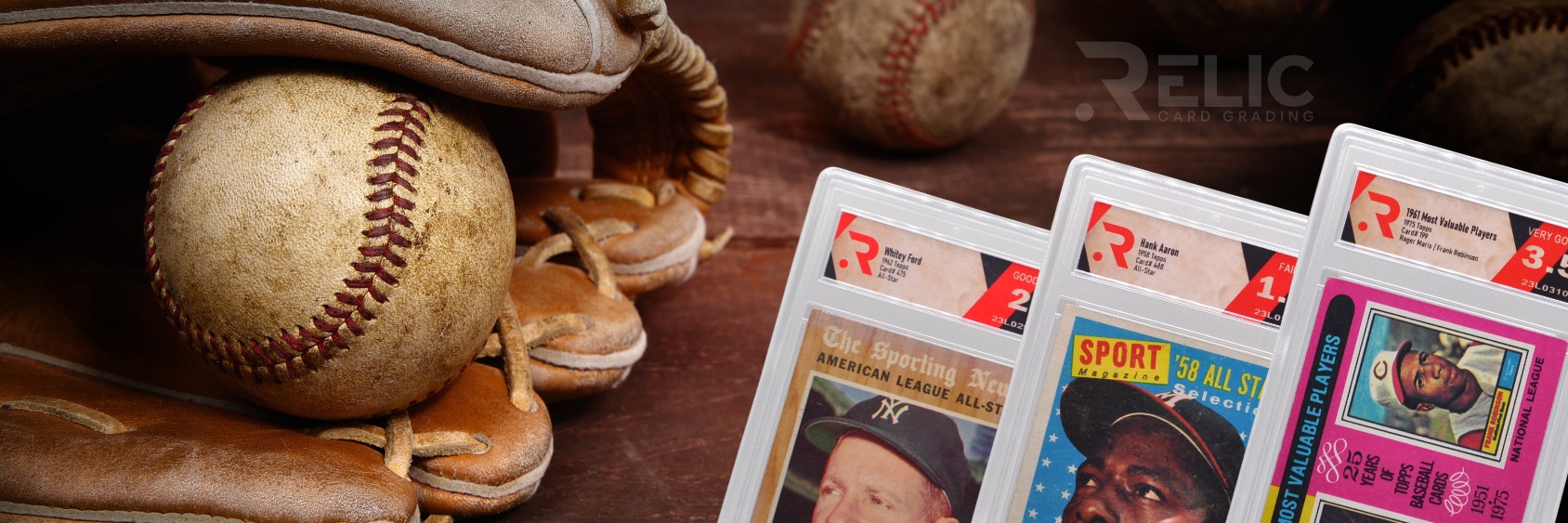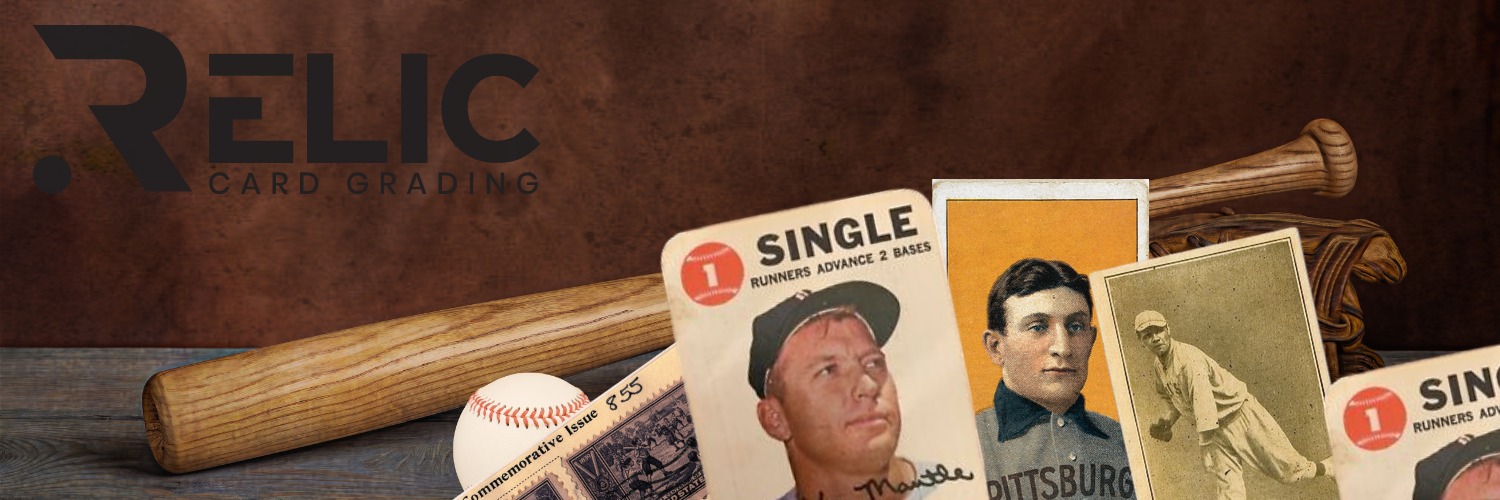
INTRO TO THE ICONS OF PRE-WAR BASEBALL CARDS
As discussed in the first part of our “History of Baseball Cards in America” series, the era defining the term “pre-war” card(s) varies depending on the collector, hobbyist, or historian. However, while pinpointing the exact era that defines “pre-war” cards may be confusing and equally complicated, there’s one thing that holds true; the early years of baseball cards are rooted in capturing iconic images of baseball icons who played pivotal roles in shaping baseball history. From the illustrious Honus Wagner to the unmatched prowess of Babe Ruth, this era saw legends who are still revered today.
Honus Wagner: The Flying Dutchman
No discussion of pre-war baseball cards is complete without acknowledging the T206 Honus Wagner card. While the card itself is iconic, Wagner’s influence on the sport is equally monumental. Known as the “Flying Dutchman,” Wagner’s skill on the field was unparalleled during his time, and his card remains a Holy Grail for many collectors. While scarcity of early Honus Wagner cards plays a major role in their present- day value, his accolades are also a major contributing factor. Here are some of Wagner’s accomplishments:
Hall of Famer: Wagner was part of the inaugural class of inductees into the Baseball Hall of Fame in 1936, alongside other legends like Babe Ruth, Ty Cobb, Christy Mathewson, and Walter Johnson.
Batting Titles: Wagner won eight National League batting titles (1900, 1903, 1904, 1907, 1908, 1909, 1911, and 1912). This ties him with Tony Gwynn for the most in NL history, and only Ty Cobb has more overall with 12.
World Series Champion: He played a pivotal role in the Pittsburgh Pirates’ victory in the 1909 World Series against the Detroit Tigers.
Career Statistics: In his career, Wagner accumulated over 3,400 hits, a .327 lifetime batting average, and stole 722 bases.
Versatile Player: Beyond his abilities at the plate, Wagner was known for his strong arm, range, and versatility. While he’s best remembered as a shortstop, he played every position except catcher during his career.
Baseball Card: His T206 baseball card, produced from 1909 to 1911, is one of the rarest and most valuable baseball cards ever made. Its scarcity is largely due to Wagner’s request to remove it from cigarette packs, possibly because he didn’t want to encourage smoking among young fans.
Legacy: Wagner’s number 33 is retired by the Pittsburgh Pirates, and he is often cited in discussions about the greatest baseball players of all time.
Coaching: After retiring as a player, Wagner served as a hitting coach for the Pirates, nurturing younger players and passing on his knowledge of the game.
Longevity: Wagner’s 21-season playing career was quite lengthy for his era, demonstrating both his talent and his durability.
Recognition: In 1999, he was named to the Major League Baseball All-Century Team, solidifying his legacy as one of the game’s all-time greats.
Throughout his life and career, Wagner was also known for his humility, sportsmanship, and integrity, making him not only a great player but a revered figure in the annals of baseball history.
Babe Ruth: The Sultan of Swat
Then came Babe Ruth, a figure synonymous with baseball’s Golden Age. His prodigious home runs and charismatic personality were immortalized on many cards of the time. Ruth wasn’t just a baseball player; he was an era-defining icon. The Topps baseball cards, and other card brands, bearing his image, are some of the most sought-after collectibles today. Babe Ruth’s accomplishments led to a litany of nicknames, including:
- The Bambino: Arguably his most famous nickname derived from the Italian word for “baby.”
- The Sultan of Swat: A nod to his impressive power and ability to hit home runs.
- The Big Bam: Another reference to his hitting prowess.
- The Colossus of Clout: An alliteration describing his unmatched baseball skill and influence.
- The King of Crash: A nod to the force and frequency of his home runs.
- The Great Bambino: A variation of “The Bambino” nickname.
While these nicknames vary, they all share a common theme: they pay homage to Babe Ruth’s unparalleled skills, larger-than-life personality, and legendary status in baseball.
Say Hello to "Shoeless" Joe & the Black Sox Scandal
“Shoeless” Joe Jackson received his unique nickname from an incident during his early baseball days. The story goes:
While playing for the Greenville Spinners in South Carolina, a minor league team, Jackson had bought a new pair of cleats. During one particular game, these cleats gave him painful blisters on his feet. The discomfort became so unbearable that when he came up to bat, he removed the cleats and stepped up to the plate in his stocking feet.
A fan in the stands reportedly shouted, “you shoeless son of a gun!” or something to that effect, referring to Jackson playing without his shoes on. Other attendees and players caught onto this, and the nickname “Shoeless Joe” stuck.
The “Black Box” Scandal
The “Black Sox” scandal revolves around the 1919 World Series between the Chicago White Sox and the Cincinnati Reds. Eight members of the Chicago team were accused of intentionally losing games in exchange for money from gamblers.
The Players Involved included:
- Eddie Cicotte
- Claude “Lefty” Williams
- Arnold “Chick” Gandil
- Oscar “Happy” Felsch
- George “Buck” Weaver
- Charles “Swede” Risberg
- Fred McMullin
- “Shoeless” Joe Jackson
Of these, Joe Jackson is perhaps the most famous, as he was one of the top players of his era.
Outcome: The scandal came to light in 1920, and while the accused players were acquitted of criminal charges in a 1921 trial, all eight were banned from professional baseball for life by Commissioner Kenesaw Mountain Landis. This decision remains controversial, especially in the case of “Shoeless” Joe Jackson, who many believe may have been innocent or less complicit than the others.
Impact: The Black Sox Scandal had a profound impact on baseball. It led to the appointment of the first Commissioner of Baseball, Kenesaw Mountain Landis, and the establishment of a centralized authority in baseball to maintain the sport’s integrity. The scandal also led to a series of measures designed to reaffirm public confidence in the game’s legitimacy and prevent such incidents in the future.
Despite Jackson’s alleged involvement in the Blac Sox Scandal, or maybe partially attributed to it, many of his cards are extremely sought-after by collectors. His Cracker Jack cards from 1915, featuring various images of Jackson, set against a fiery red background, remain to be some of the most desired cards from this period.
Ty Cobb: The Georgia Peach
Ty Cobb, known for his aggressive playing style and impressive career batting average, was another icon of this era. His cards, especially those in the T206 series, are revered not only for their representation of Cobb but also for the variations in backgrounds and poses.
Other Baseball Luminaries of the Pre-War Era
While Wagner, Ruth, Jackson, and Cobb are giants of the era, many other players left indelible marks. Players like Jackie Robinson, who broke racial barriers, and Lou Gehrig, known for his humility and consistency, were all critical figures of this age. Their contributions, both on the field and as card staples, shaped the baseball card hobby and the sport in countless ways.
Conclusion
Baseball cards from the pre-war era are more than just collectibles; they’re historical artifacts. Through them, we can trace societal changes, from the design and production intricacies due to wartime constraints to the evolving aesthetics matching the nation’s mood. These cards offer a lens through which to view baseball’s and America’s history. As we journey through baseball card history, the pre-war era stands out as a beacon, showcasing legendary players who transcended the sport. Their cards, coveted by collectors, are testaments to their lasting legacy.

